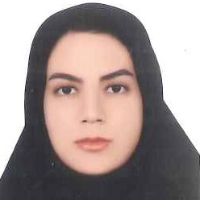فهرست مطالب a. sayadi
-
Aims
Research shows that students are one of the groups at risk of Internet addiction, and it seems necessary to control their psychological and social well-being affected by Internet addiction. The expansion of various job, educational, and communication dimensions of the Internet makes clear the necessity of using this tool in different groups, especially students; therefore, this study was conducted to determine the effectiveness of an educational intervention based on social cognitive theory on reducing Internet addiction in medical students of Bandar Abbas.
Materials & MethodsThis semi-experimental intervention study was conducted on 201 students of Banda Abbas University of Medical Sciences in 2020. Initially, students answered a researcher-made social cognitive theory (SCT) questionnaire and Young's Internet Addiction Inventory (IAT). Then, they were placed in two intervention and control groups with the same distribution. The intervention group received educational content for six weeks to reduce Internet addiction. Two months later, two groups completed the questionnaires again, and the data were analyzed with SPSS 16 software with covariance analysis and logistic regression.
FindingsStatistically significant differences were observed between the two groups in knowledge (F=7.138; p=0.008), outcome expectation (F=7.881; p=0.006), outcome expectancies (F=8.697; p=0.004), self-efficacy to overcome obstacles (F=6.294; p=0.013), self-regulation (F=5.680; p=0.018) and emotional adjustment (F=8.664; p=0.004).
ConclusionEducational intervention based on the social cognitive theory affects knowledge, outcome expectations, outcome expectancies, self-efficacy to overcome impediments, self-control, and emotional coping of Internet addiction.
Keywords: Internet Addiction Disorder, Social cognitive theory, Medical Students} -
به منظور مدیریت کارا و موثر منابع آب زیرزمینی و کاهش حفر چاه های نمونه برداری که پر هزینه هستند، شبکه های پایشی که به طور مناسبی طراحی شده باشند، می توانند به عنوان یک گزینه در نظر گرفته شوند. آنالیز مولفه های اصلی یکی از تکنیک های کاهش داده می باشد که اساس آن شناسایی مولفه های توصیف کننده واریانس سیستم می باشد. در این مقاله از آنالیز مولفه های اصلی جهت تعیین چاه های موثر و حذف چاه های کم اهمیت استفاده شده است. به این منظور از اطلاعات 160 چاهک احداث شده در کشت و صنعت سلمان فارسی که طی 10 ماه به صورت دو بار در ماه اندازه گیری شده، استفاده گردید. با استفاده از آنالیز مولفه های اصلی اهمیت نسبی هر چاه در برآورد عمق سطح آب زیرزمینی محاسبه گردید. در پژوهش حاضر حد آستانه قابل قبول 8/0 در نطر گرفته شد که بر اساس آن تعداد چاه های موثر در تعیین عمق سطح آب زیرزمینی به 33 چاه تقلیل نمود. با شناسایی چاه های با اهمیت، نقاط مهم جهت نمونه برداری معلوم می شود و پایش عمق آب زیرزمینی صرفا در این چاه ها انجام می گردد. به این وسیله می توان تا حد زیادی در هزینه و زمان مطالعات صرفه جویی کرد .کلید واژگان: آب زیرزمینی, آنالیز مولفه های اصلی, پایش}Well designed monitoring networks are essential for the effective management of groundwater resources but the costs of monitoring well installations and sampling can prove prohibitive. Principal Component Analysis (PCA) is one of the data reduction techniques used to extract the important components that explain the variance of a system. In this paper, the PCA was used to identify the effective wells and remove the less important ones. For this purpose, 160 wells were constructed in the Salman Farsi agro-industry, which was measured twice in a month during 10 months. In this technique, variation factors called principle components are identified with considering data structures. Using the PCA, the relative importance of each well was calculated for groundwater depth estimation. In the present study, the acceptable threshold was taken to be 0.8, according to which the number of wells in determining groundwater depth was reduced to 33 wells. By identifying important wells, important points for sampling are identified, and groundwater depth monitoring is performed only in these wells. As a result, it can save a great deal of time and cost of studies.Keywords: Groundwater, Principal Component Analysis, Monitoring}
- در این صفحه نام مورد نظر در اسامی نویسندگان مقالات جستجو میشود. ممکن است نتایج شامل مطالب نویسندگان هم نام و حتی در رشتههای مختلف باشد.
- همه مقالات ترجمه فارسی یا انگلیسی ندارند پس ممکن است مقالاتی باشند که نام نویسنده مورد نظر شما به صورت معادل فارسی یا انگلیسی آن درج شده باشد. در صفحه جستجوی پیشرفته میتوانید همزمان نام فارسی و انگلیسی نویسنده را درج نمایید.
- در صورتی که میخواهید جستجو را با شرایط متفاوت تکرار کنید به صفحه جستجوی پیشرفته مطالب نشریات مراجعه کنید.


